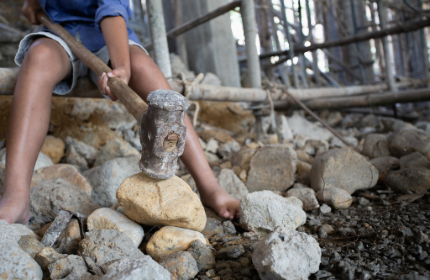Breaking the Cycle: Combating Child Labor and Exploitation
Breaking the Cycle: Combating Child Labor and Exploitation
Child labor and exploitation continue to be pressing issues in many parts of the world, depriving millions of children of their rights and hindering their development. Understanding the prevalence of child labor is crucial in order to effectively combat this problem. The impact of child labor on children’s rights and development is far-reaching, affecting their physical and mental well-being, education, and future prospects. However, there are strategies that can be implemented to combat child labor and exploitation, and promote sustainable solutions that ensure a better future for children.
Understanding the Prevalence of Child Labor
Child labor remains a widespread problem, with an estimated 152 million children engaged in child labor globally, according to the International Labor Organization (ILO). This includes children involved in hazardous work that is detrimental to their health and safety. The prevalence of child labor is particularly high in regions such as Sub-Saharan Africa, Asia, and the Pacific, where poverty, lack of education, and weak labor laws contribute to the perpetuation of this cycle.
In many cases, children are forced into labor due to economic necessity, as their families struggle to make ends meet. They may be engaged in agriculture, domestic work, or even in industries such as mining and manufacturing. These children are often subjected to long hours of work, low wages, and hazardous conditions, which not only violate their rights but also hinder their physical and cognitive development.
The Impact of Child Labor on Children’s Rights and Development
Child labor has a profound impact on children’s rights and development. Firstly, it denies them the right to education, as they are unable to attend school and acquire the necessary skills for a better future. Education is a fundamental right that empowers children and enables them to break free from the cycle of poverty. Without education, these children are more likely to remain trapped in a cycle of exploitation and poverty.
Moreover, child labor exposes children to physical and psychological harm. They are often subjected to dangerous working conditions, such as exposure to toxic substances, heavy lifting, and long hours of work. This not only jeopardizes their physical health but also hinders their mental and emotional well-being. These children are deprived of their right to play, rest, and enjoy a normal childhood, which is essential for their overall development.
Strategies for Combating Child Labor and Exploitation
To combat child labor and exploitation, a multi-faceted approach is required. Firstly, governments need to strengthen their legislation and enforcement mechanisms to ensure that child labor is effectively prohibited and penalized. This includes setting minimum age limits for work, regulating working conditions, and establishing mechanisms for monitoring and reporting violations. Additionally, governments should invest in education and social protection programs that target vulnerable families, providing them with the necessary support to lift themselves out of poverty.
Furthermore, businesses have a crucial role to play in combating child labor. They should adopt responsible business practices that prioritize the elimination of child labor from their supply chains. This includes conducting regular audits, engaging with suppliers, and supporting initiatives that promote fair and ethical labor practices. Consumers also have a role to play by demanding products that are free from child labor and supporting companies that prioritize ethical sourcing.
Promoting Sustainable Solutions and Ensuring a Better Future for Children
In order to ensure a better future for children, it is essential to promote sustainable solutions that address the root causes of child labor. This includes tackling poverty, improving access to quality education, and empowering communities to break free from the cycle of exploitation. Governments, civil society organizations, and international bodies should work together to provide comprehensive support to vulnerable families, ensuring that children are protected and given the opportunity to thrive.
In conclusion, child labor and exploitation continue to be significant challenges that deprive millions of children of their rights and hinder their development. Understanding the prevalence of child labor, its impact on children’s rights and development, and implementing strategies to combat it are crucial steps towards breaking this cycle. By promoting sustainable solutions and ensuring a better future for children, we can create a world where every child is free from exploitation and has the opportunity to reach their full potential.




